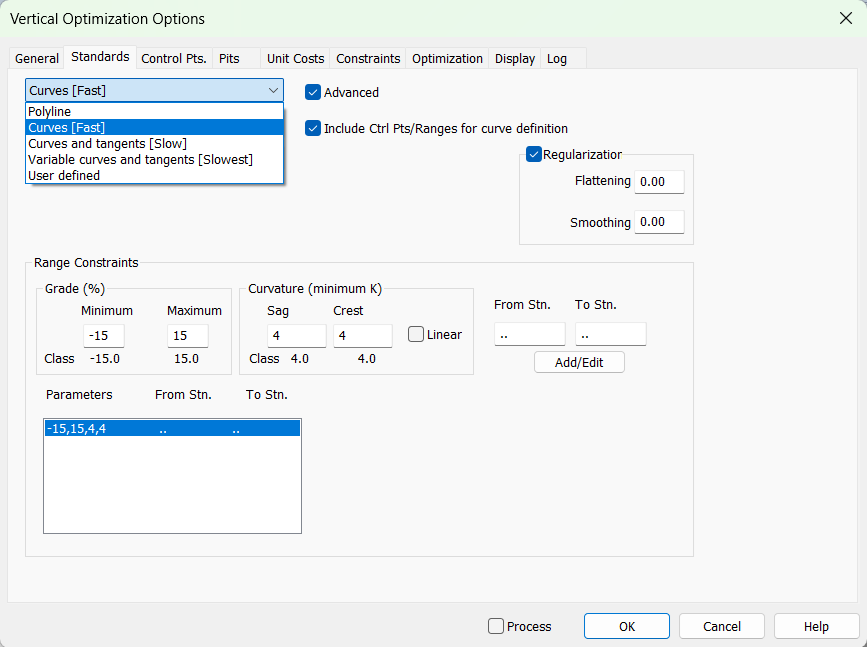Types of Curves
Updated May 28, 2024
This article applies to:
- Softree Optimal
There are five vertical alignment types generated by Softree Optimal:
-
Polyline: No curves; vertical alignment is a series of tangents. You can control the minimum tangent length and the maximum grade break between tangents.
-
Curves [Fast]: Curves are allowed to be adjacent (back to back). You can control minimum curve length and curvature (K values).
-
Curves and tangents [Slow]: Similar to above, except a tangent is inserted between curves. The minimum tangent length is the same as the minimum curve length.
-
Variable curves and tangents [Slowest]: Similar to above, except that the minimum curve and tangent lengths are not required to be equal and curve location is more flexible.
-
User Defined: Curves and/or VIPs (Vertical Intersection Points) defined in the current alignment are preserved. Optimal can only move existing VIPs up and down without changing curve length.

Figure 1: Types of Curves.
What type of curve should I use?
The Polyline type is often used for low volume resource roads where geometric curves are not required. Like Curves [Fast], this optimization is relatively quick.
Curves [Fast] (back to back curves) is the quickest curve type for Softree Optimal to solve. For this reason, we recommend that you start with this curve type while you are still experimenting with constraints and other options. If you have not yet finalized your horizontal alignment, use this curve type to quickly generate a feasible solution and cost estimate for each possible horizontal alignment.
Note: Curves [Fast] is a good starting point for many workflows; it will give you a qualitative profile and the lowest possible cost. Keep this alignment and use it as a base line for comparison to future iterations.
The next two curve types are often used towards the end of the design cycle to generate a final vertical alignment. Because curves are separated by tangents, it is also easier to modify curves manually after optimization.
Variable curves and tangents [Slowest] is more flexible than Curves and tangents [Slow]. You can define the minimum tangent length to be different from the minimum curve length (if required by standards). In addition, Softree Optimal has more freedom to choose where to start or end a curve (see curve base length below); this can lead to a more cost-effective design.
Finally, User defined allows you to take an alignment and optimize the cost by changing only the elevation of the existing VIPs. We see this as a kind of hybrid human/machine process where the designer chooses the location of the curves and tangents and Softree Optimal fine tunes the elevations to get minimum cost.